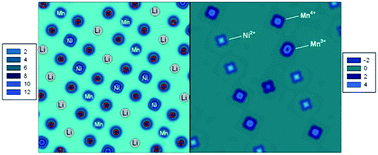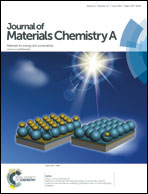Effects of cationic substitution on structural defects in layered cathode materials LiNiO2
Abstract
The electrochemical properties of layered rock salt cathode materials are strongly influenced by defects. The three most common defects in LiNiO2-based compounds, namely extra Ni, Li–Ni anti-site and oxygen vacancy defects have been investigated. The calculated defect formation energies are very low in LiNiO2, consistent with the difficulty in synthesizing stoichiometric defect-free LiNiO2. A systematic study is conducted to examine the effect of Co, Mn and Al substitution on defect formation. It is shown that the presence of Ni2+ in the Li layer can be rationalized using ideas of superexchange interactions. In addition, a correlation between oxygen vacancy formation energy and oxygen charge is noted. This explains the better thermal stability obtained by early transition metal or Al substitutions.


 Please wait while we load your content...
Please wait while we load your content...